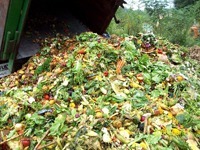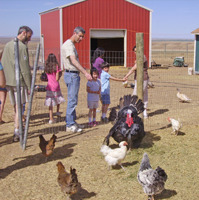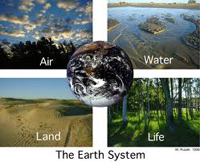Kate Lawrence's Blog, page 6
November 11, 2012
The Barrage of Turkey Advertising
 November is a tough time for vegans, as the push to connect the Thanksgiving holiday with the sacrifice of innocent turkeys is everywhere. It’s as though the presence of a dead bird on the table is essential to enjoying a feast and expressing our gratitude for food, friends, and family. It is particularly sad to hear the holiday referred to as “Turkey Day.”
November is a tough time for vegans, as the push to connect the Thanksgiving holiday with the sacrifice of innocent turkeys is everywhere. It’s as though the presence of a dead bird on the table is essential to enjoying a feast and expressing our gratitude for food, friends, and family. It is particularly sad to hear the holiday referred to as “Turkey Day.”
Nowhere that I’ve found is the pressure to order someone to kill a turkey stronger than at my local Natural Grocers by Vitamin Cottage store. They put the dead turkey promo in customers’ faces not once or twice, but seven times at each visit. This began not just two or three weeks before Thanksgiving, but from the beginning of October! I wrote to their Corporate Customer Service about it over two weeks ago, asking them to tone it down, but never got a response. Here are the seven ways:
1) the sign on the front door urging me to order a turkey
2) another larger poster in the entryway telling me how many days I have left to order
3) a continuously replaying video extolling the purity of these “organic free-range” doomed birds–I first saw this on Oct. 3, seven weeks before Thanksgiving and I’ve had to hear it drone on by the entrance every time I’ve come in the store since
4) staff dressed in turkey costumes or visors. One was joking with a co-worker, clowning and saying “gobble, gobble”–as though victimizing these birds is a light-hearted matter
5) the cashier asking–again–if I’ve placed my order
6) large letters around the clock on the front wall spelling out “TURKEY TIME”
7)–this was really the last straw–just opposite the checkout area, a contest set up in which customers who order a turkey can enter their name for a gift card! Let me get this straight: the only people allowed to enter this contest are those willing to order an animal to be killed for them? This is clearly discriminatory; it should be that everyone who spends the same amount of dollars in the store could enter this contest.
Except at this time of year, I enjoy shopping at Natural Grocers, as they feature low prices, produce that is all organic, and friendly staff. Whole Foods is much more veg friendly at this time of year. They have a couple of prominent signs urging customers to order “Holiday Foods,” and there is a drawing of a dead turkey on the signs, but their holiday food menu includes vegan options as well.
In being so heavy-handed, Natural Grocers is alienating vegetarians and vegans, and perpetuating the cruel association of animal sacrifice with giving thanks. To express your opinion to them, go here.
October 26, 2012
Practical Peacemaker author interview
Here’s the interview I gave as part of the “Authors at Douglas County [Colorado] Libraries” series:
October 12, 2012
Vegan Dining in Kansas City
 Just back from a trip to Kansas City to attend my nephew’s wedding, I can offer some suggestions for great vegan dining there. We stopped for brunch at all-vegan Cafe Gratitude in downtown KC Missouri, not far from the beautifully renovated Union Station. The Cafe’s dishes are all identified by affirmations, such as I Am Courageous, I Am Humble, I Am Trusting, I Am Fulfilled, etc. When waitstaff deliver someone’s order they repeat the affirmation of the dish, beginning the statement with “You.” That is, when I ordered I Am Extraordinary, the server placed it in front of me saying, “You are extraordinary.” It’s a nice touch. The “Extraordinary” dish is well-named: a sandwich featuring toasted chipotle-maple coconut “bacon” with cashew aioli, lettuce, tomato and avocado on a bun. The menu features a number of raw entrees as well.
Just back from a trip to Kansas City to attend my nephew’s wedding, I can offer some suggestions for great vegan dining there. We stopped for brunch at all-vegan Cafe Gratitude in downtown KC Missouri, not far from the beautifully renovated Union Station. The Cafe’s dishes are all identified by affirmations, such as I Am Courageous, I Am Humble, I Am Trusting, I Am Fulfilled, etc. When waitstaff deliver someone’s order they repeat the affirmation of the dish, beginning the statement with “You.” That is, when I ordered I Am Extraordinary, the server placed it in front of me saying, “You are extraordinary.” It’s a nice touch. The “Extraordinary” dish is well-named: a sandwich featuring toasted chipotle-maple coconut “bacon” with cashew aioli, lettuce, tomato and avocado on a bun. The menu features a number of raw entrees as well.
We ordered additional meals as carry-out for the wedding reception that evening. The reception was catered by a local BBQ restaurant, and nothing was vegan. Even the roasted veggies were mixed with grated cheese! While other guests were eating a low-fiber, high-fat, high cholesterol meal, I was enjoying I Am Fortified: quinoa with sauteed veggies and kale, topped with a handful of sunflower sprouts and a delicious garlic-tahini sauce. Cafe Gratitude also has restaurants in California.
Minsky’s Pizza was the venue for the rehearsal dinner; it has a number of locations around the KC area. While not vegan-oriented, they did know how to accommodate us. One of their pizza crusts is vegan, as is at least one of the sauces, plus lots of veggie toppings. They had recently added Daiya cheese as an option. The pizza they made for us was the best I’ve had in a long time.
 On a lazy Sunday morning the day after the wedding, we relaxed in the comfortable living room of the Mud Pie Vegan Bakery and Coffeehouse near the KU Medical Center. It’s located in an old house, painted bright yellow so you can’t miss it in a funky neighborhood with lots of small businesses. I sampled and can recommend the French toast cupcakes, the PB cookies, and the decadent chocolate/coconut bars. In addition to coffee and tea, they offer hot cocoa made with your choice of five different milks–none of them dairy. Two computers are available for use by patrons, as well as that day’s Kansas City Star newspaper.
On a lazy Sunday morning the day after the wedding, we relaxed in the comfortable living room of the Mud Pie Vegan Bakery and Coffeehouse near the KU Medical Center. It’s located in an old house, painted bright yellow so you can’t miss it in a funky neighborhood with lots of small businesses. I sampled and can recommend the French toast cupcakes, the PB cookies, and the decadent chocolate/coconut bars. In addition to coffee and tea, they offer hot cocoa made with your choice of five different milks–none of them dairy. Two computers are available for use by patrons, as well as that day’s Kansas City Star newspaper.
Another vegan restaurant I can recommend, this one in the Westside neighborhood, is Fud (pronounced “food”). We dined there on a previous trip and were well pleased.
August 17, 2012
Are Vegans Falling into the Consumer Trap?
 Surely by this point in history it is a no-brainer that if we want to preserve the planet’s ability to support life, we in the rich countries must cut back our consumption. One of the easiest and most effective ways to do this is to reduce, or ideally completely eliminate, animal products from our diet. Yet vegans, who “get it” about the latter, often seem unaware of the former. In vegetarian magazines I see numerous ads for overseas travel and other luxury “vegan vacations”, for countless gourmet food items and high-fashion clothing and shoes. Every one of these has a carbon footprint to consider, especially flying around the globe for a brief getaway. The food and clothing items have a resource impact in their production, plus the packaging and energy it takes to ship them to our door.
Surely by this point in history it is a no-brainer that if we want to preserve the planet’s ability to support life, we in the rich countries must cut back our consumption. One of the easiest and most effective ways to do this is to reduce, or ideally completely eliminate, animal products from our diet. Yet vegans, who “get it” about the latter, often seem unaware of the former. In vegetarian magazines I see numerous ads for overseas travel and other luxury “vegan vacations”, for countless gourmet food items and high-fashion clothing and shoes. Every one of these has a carbon footprint to consider, especially flying around the globe for a brief getaway. The food and clothing items have a resource impact in their production, plus the packaging and energy it takes to ship them to our door.
Instead of proving to mainstream society that vegans can live just as decadently as everyone else, we need to question the long-term sustainability of the mainstream American lifestyle. The planet is in serious, perhaps irreversible trouble; millions are already unemployed and elsewhere around the world, starving. The media tells us to spend, spend, spend, but that only speeds up–for short term gain–the depletion of resources on which we all depend. Serious cutbacks are called for, and I’m not sure vegans are paying attention. Perhaps for a special holiday we might have a dessert shipped in–although better would be to learn to make something perhaps less fancy, but equally delicious, ourselves. No matter how much money we have, maybe once in ten years we might consider an overseas vacation. Once in awhile we can justify a luxury item, and I’m not suggesting we never have a little splurge. But the operative word here is “little.”
The new 21st century compassion that vegans and everyone else needs to understand is not only about animals, but about the planet and its poorest inhabitants. It is called simple living, and is not deprivation (unless not having stiletto-heeled fake suede boots shipped in from New York is considered deprivation). It is rich in getting to know your local history and nearby natural beauty on vacations, trying new combinations of food in your own kitchen, getting a few fun clothes at a thrift shop. It is creative in building new skills, finding out what you can make and grow yourself, and how you can repurpose unwanted items for new uses. It is turning off the television, radio, smartphone or laptop and spending time with actual people instead of tweeting and texting. It is the enjoyment of riding a bike for transportation, at least once in awhile. It is finding out that it is more fun to gather with friends and play social games that require no electricity, than to spend time alone with video games that do.
Whether vegans or not, we need to resist the advertising-driven call to consume more, or soon there will be nothing left to consume.
July 1, 2012
Reflecting on Colorado’s Wildfires
 Wildfires have burned in Colorado early and often this year, with unprecedented losses of personal property and forest acreage. Increasing numbers of people–now 1 out of 5 in Colorado- -live in so-called “red zones,” areas at high risk of fires. Climate change has also been a factor, bringing warmer and dryer weather. Throughout the centuries, naturally occurring fires kept forest acreage healthy, but in the last century fires have been largely suppressed, contributing to more growth of underbrush. This growth, allowed to accumulate, gives pine beetles more to chew on, creates more fuel for fires, and makes new fires harder to control.
Wildfires have burned in Colorado early and often this year, with unprecedented losses of personal property and forest acreage. Increasing numbers of people–now 1 out of 5 in Colorado- -live in so-called “red zones,” areas at high risk of fires. Climate change has also been a factor, bringing warmer and dryer weather. Throughout the centuries, naturally occurring fires kept forest acreage healthy, but in the last century fires have been largely suppressed, contributing to more growth of underbrush. This growth, allowed to accumulate, gives pine beetles more to chew on, creates more fuel for fires, and makes new fires harder to control.
It is more and more costly, now nearly half its budget, for the Forest Service to provide high country residents protection for their property and their lives. In today’s Denver Post, a writer made the point that currently, rather than those who live in red zones helping to pay for their own higher risk of property loss, the cost of fighting wildfires is shared by all taxpayers. That shared cost makes it more appealing to live in those areas. People should be able to live anywhere they want, but given the high cost of fighting fires, shouldn’t people who choose to live in high risk areas pay some of the cost? If an extra cost to homeowners discourages people from living in red zones, that would be beneficial, ultimately reducing the number of homes needing protection. Homeowners in red zones could be assessed a additional fee for wildfire protection as part of their property tax, for example.
Another concern I have is about the hundreds of thousands of gallons of fire retardant dumped on these fires. Last year, the U.S. Forest Service released a 370-page report on the effects of these chemicals. Retardants kill fish, contaminate aquifers and fertilize noxious weeds. According to an analysis of the report in High Country News, “Chemical fire retardants do slow a fire’s progress and help firefighters construct fire lines. But they don’t keep wind-driven embers from igniting cedar-shake roofs where communities border wilderness, which is arguably the best reason to extinguish fires. Jack Cohen, a Forest Service scientist in Missoula, Mont., has found that homes can survive even high-intensity crown fires if they’re constructed of the right materials and surrounded by a 200-foot buffer zone. Fire suppression has little to do with it.” Critics say that studies more accurately accessing the effectiveness of retardants are needed.
I will be interested to see the unfolding discussion on these and other wildfire-related issues. As the climate continues to warm, wildfires such as we have seen in the past month are not likely to be that unusual.
June 21, 2012
“Humanely-Raised” Meat and Animal Welfare
 I wrote this response to an argument I heard recently that buying “humanely-raised” meat could reduce animal suffering more than going vegetarian or vegan, because it would increase the market for those products.
I wrote this response to an argument I heard recently that buying “humanely-raised” meat could reduce animal suffering more than going vegetarian or vegan, because it would increase the market for those products.
I use quotation marks around “humanely-raised” because, for practical purposes, there is no humane way to raise animals for human consumption. “Humanely-raised” animals still suffer.
Most “free-range” chickens, for example, are still crowded tightly in dark, stench-filled sheds and still painfully de-beaked without anesthesia. A small door in the shed leads to a tiny outdoor run; however, very few of the birds are able to cross the crowded shed to access it. “Humanely- produced” dairy products still require cows to be kept constantly pregnant–that’s the only way to get a continual supply of milk–and the newborn calves are still taken away at birth, so that humans can consume milk or cheese. Cows know their own babies and cry out for them long after the calves are taken away. In egg production, only females will eventually lay eggs, of course, so hatcheries kill male chicks right after hatching, seldom humanely. A backyard chicken keeper may be completely unaware of the slaughter that preceded her order from a hatchery of young hens to raise.
Even if a farmer is willing to provide a natural outdoor life, animals bred and raised for human consumption always have their young taken away, and are slaughtered early in life, usually after less than one-fourth of a full life span. Also, in order to qualify for the organic label, farmers may be required to withhold drugs from animals who become sick, causing more suffering. Is it humane for us as a society to confine and dictate the circumstances of life and early death for over ten billion sentient animals in the U.S. each year? If we treated dogs this way, would it be considered ethical?
Increased support for “humane” farmers would not mean better conditions for all livestock animals, due to reasons of economics and scale. Regarding economics, the market for any product always moves in the direction of greater efficiency and lower price. In the case of livestock animals, greater efficiency and lower price mean greater crowding and more harmful exploitation, so that even “humane” farmers will constantly be tempted to cut corners, to treat animals less well, in order to get the price of those steaks or eggs a few cents lower than their competitors. That’s why factory farming methods became the norm.
In terms of scale, animals raised under marginally better conditions will always be a higher-priced niche market for a relatively few people; it cannot be widely expanded. Why? Any kind of meat production is highly resource-intensive, but “humanely-raised” meat production requires even more. Our planet simply does not have sufficient pasture land, topsoil, water, and energy to allow a higher percentage of farmed animals to take up more space and consume the food necessary for longer lives. For example, if all feedlot cattle in the U.S. were grass-raised instead, at roughly ten acres per cow, they would occupy nearly half our land area!
A fact that makes any type of livestock raising even less defensible is that eating meat is completely unnecessary, in fact detrimental, to human health. Furthermore, reduced meat consumption would greatly benefit the planet, because livestock agriculture is a primary source of deforestation, topsoil erosion, and water pollution, while producing more greenhouse gases than the entire transportation sector combined. Grass-fed cattle, for example, produce more methane, a potent greenhouse gas, than do those in feedlots.
Why confine, manipulate, and slaughter sentient creatures when it is both unnecessary as well as harmful to human health and the health of the planet? Plant-based meals are colorful, varied, healthful, satisfying, and delicious, and you’ll find more support than ever these days for enjoying more of them, while reducing your overall meat consumption.
April 12, 2012
Reducing Food Wastage
 I grew up in a clean-your-dinner-plate kind of family, with parents whose food limitations during the Great Depression and World War II rationing had taught them to value food highly. That ethic has stayed with me, so I have been shocked over recent months to learn of the gargantuan amounts of food wasted, some of it, especially in restaurants, still perfectly edible.
I grew up in a clean-your-dinner-plate kind of family, with parents whose food limitations during the Great Depression and World War II rationing had taught them to value food highly. That ethic has stayed with me, so I have been shocked over recent months to learn of the gargantuan amounts of food wasted, some of it, especially in restaurants, still perfectly edible.
I first became aware of the problem when I read the book How Bad Are Bananas? by Mike Berners-Lee. In the section about reducing the carbon footprint of food, the number one suggestion was not to waste it. That was ahead of any mention of what you eat, how it was grown, or how far it travelled. Then recently, the topic was again brought to my attention in a blog post by James McWilliams (I highly recommend following his blog “Eating Plants”). He cites a study finding that consumers throw out an astonishing half the food they buy!
Now my interest was piqued, so I looked a little further. “Global Food Losses and Food Waste”, a 2011 report from the FAO (United Nations Food and Agriculture Organization), states that worldwide, one-third of all food–that’s 1.3 billion tons each year–is wasted. In Europe and North America the figure is 620 to 660 pounds per person wasted each year. In the developed world, about one-third of the wastage is done by consumers, discarding even food that is still edible. “The Battle Against Food Waste” (New York Times, Jan. 15, 2012) discusses some responses to the problem. And here are some suggestions for individual action:
Plan your meals and shop accordingly. Write a shopping list and stick to it. This helps to prevent impulse buying. And never go shopping when you’re hungry.
Learn to use items in creative ways so they’ll last longer.
Keep an eye on your serving size. Many times, we feel forced to eat all that’s on our plate. Sharing out less food will cause less waste, and you’ll still be fulfilled.
Don’t ignore leftovers. New meals can easily be created from previous meals.
I would add:
If you have leftovers you won’t be eating soon, freeze them before spoilage begins.
Compost your kitchen scraps.
Growing, harvesting and transporting our food to market has a huge planetary impact in terms of energy, water, pesticide use, and topsoil erosion. The better we can match our food purchases to what we will actually eat, the less impact we personally are having. Being careful about food wastage is an easy thing we can all do to conserve precious resources.
April 5, 2012
A Meetup at Peaceful Prairie Sanctuary

Touring Peaceful Prairie; Roscoe the turkey (center)
Last Sunday, I participated in a group tour at the nearest farmed animal sanctuary, Peaceful Prairie, about an hour’s drive east of Denver. Both we and the animals were fortunate to have a warm, clear day to enjoy each other.
The first thing we noticed as we approached the property was a herd of llamas. I’d never seen that many, about fifteen, in one place. Then we drove through the gate and up to the house. Peaceful Prairie’s founders and directors, Chris and Michele Alley-Grubb, welcomed us. First we chatted for awhile with Chris as everyone arrived, then Michele took us out for an extended meet and greet. She explained that the llamas had been abandoned to starve, and many had already died, before Peaceful Prairie was called to the rescue. We then walked to an area where goats, chickens and turkeys were milling about, curious about all these visiting humans. In a few minutes, a pickup pulled up and a volunteer began unloading boxes of unsaleable but still edible produce donated by Whole Foods. He spread the contents widely on the ground and all the animals, led by the goats who were nearest, moved quickly to the area. Who knew that a cow, for example, would go after a potato, or a goose rip eagerly into a bell pepper, or a goat enjoy a banana? And everybody loves apples, apparently. The geese were squawking, ducks quacking, everyone congregating–in short, it was an interspecies party!

Lucas enjoys a cool mud bath
Later we saw the chickens and turkeys close up. At each stage of the tour Michele explained the miserable lives each group of animals had had before arriving at the sanctuary. She poured some muddy water into a wallow to create bliss for Lucas the pig. We saw Justice the steer whose portrait graces the front cover of the stunning book Ninety-Five. Most of the animals were very willing to come up close: Roscoe the turkey constantly strutted around us, showing off his plumage, and the goats on several occasions walked up immediately next to me to be petted.
When we were all inside the house afterwards, Michele spoke about the current threat to farmed animals of so-called sustainable farms, or “happy meat.” In contrast to the industrial food system, the myth of humane farming is lulling people who might otherwise have considered veganism to believe that it is OK now to eat animal products if these products come from a small organic farm. Yet the same abuses continue. You can educate yourself on these matters by reading “The Humane Animal Farming Myth” on the Peaceful Prairie website.
March 29, 2012
Get Vegucated!

Tesla, one of Vegucated's three featured participants, making friends with a chicken
I’d been hearing great praise for the documentary Vegucated, and this week was able to see it at a vegan potluck/movie event. Three average meat-eating New Yorkers agree to go vegan for six weeks and have their experience filmed. They get lots–and I mean lots–of support and expert advice. It begins with the filmmakers, who show them vegan advocacy films, take them grocery shopping, dining out, and to a farmed animal sanctuary. Their “vegucation” is also provided by such luminaries as Dr. Joel Fuhrman, Howard Lyman, Dr. Milton Mills, T. Colin Campbell, and other speakers and participants at the Vegetarian Summerfest, which the three attend as part of the experiment. How fortunate they were to get this kind of solid information and encouragement, compared to those of us who went vegan years ago and had to figure it all out for ourselves! Viewers, of course, get all the same encouragement vicariously by watching the film, and can find more at the Get Vegucated website, including the movie trailer; Vegan at Heart, a four-week-long daily email coaching program; tips on making social connections with other local vegans; the DVD available for purchase ($19.99); and info on hosting a screening.
You will not be bored watching this, even if you’ve been vegan for many years. Vegucated is non-threatening, engaging, informative, consistently funny, and keeps its heart open to the challenges of maintaining the vegan commitment in the real world. It shows average people changing their lives, dealing with unsympathetic friends and family, continuing until the new way of eating is no longer strange, and joyfully reaping the benefits of better health and a more peaceful conscience. I urge you to see Vegucated, talk about it and show it to friends, and encourage them to take the Vegucated Challenge.
March 22, 2012
The Value of the Ordinary
 Here’s a passage that recently caught my attention. It’s taken from Awakening to Zen, by Philip Kapleau, Roshi:
Here’s a passage that recently caught my attention. It’s taken from Awakening to Zen, by Philip Kapleau, Roshi:
“The deeply aware person sees the indivisibility of existence, the rich complexity and interrelatedness of all life. Out of this awareness grows a deep respect for the absolute value of all things, each thing. From this respect for the worth of every single object, animate as well as inanimate, comes the desire to see things used properly, and not to be heedless, wasteful, or destructive.
To truly practice Zen therefore means not leaving lights burning when they are not needed, not allowing water to run unnecessarily from the faucet, not loading up your plate and leaving food uneaten. These unmindful acts reveal an indifference to the value of the object so wasted or destroyed as well as to the efforts of those who made these things possible for us: in the case of food, the farmer, the trucker, the storekeeper, the cook, the server. This indifference is the product of a mind that sees itself as separated from a world of seemingly random change and purposeless chaos. This indifference robs us of our birthright of harmony and joy.”
A recently published book I’ve just finished reading, The Magic of Reality by evolutionary biologist Richard Dawkins, deepened my awareness of just how amazing the formation of Earth and the progress of evolution has been. Although there may be shocks provided by natural processes–like earthquakes and tornadoes–there is also profound awe. The more deeply we understand and respect the marvelous diversity of life bursting forth over unimaginable ages on this planet, and the fact that most planets seem unsuitable for life at all, how can we not value every being and every resource as precious? How can we not be continually amazed at, for example, the functioning of our own body?
The Zen master and the scientist are both trying to shake us out of the stupor of our everyday mindlessness and say, “Open your eyes! See what a precious planet you arose from, that makes all life possible. Value its resources and all beings who share them, and take great care to use only what you need.” As spring begins again, with greenness appearing seemingly from nowhere, how can we not look around in jaw-dropping wonder?



